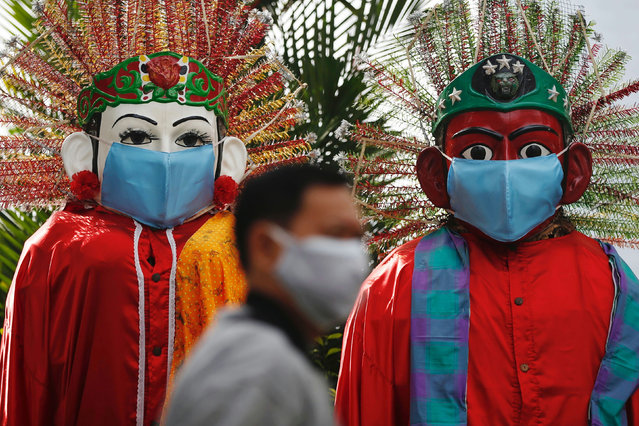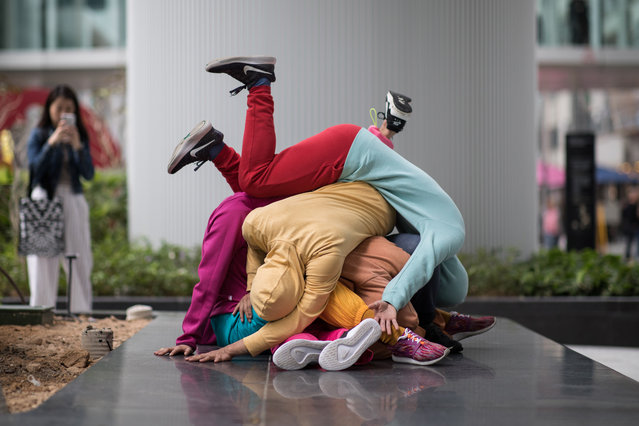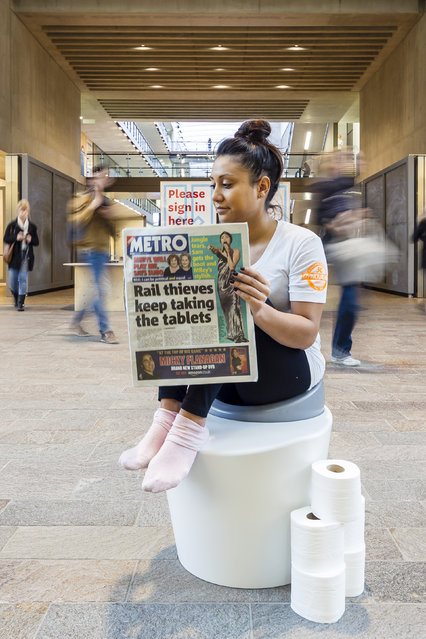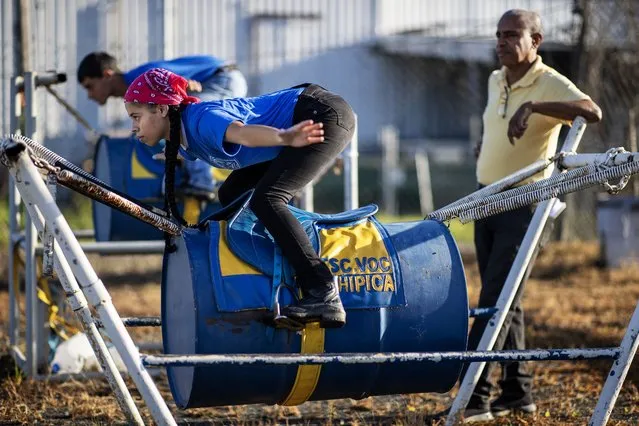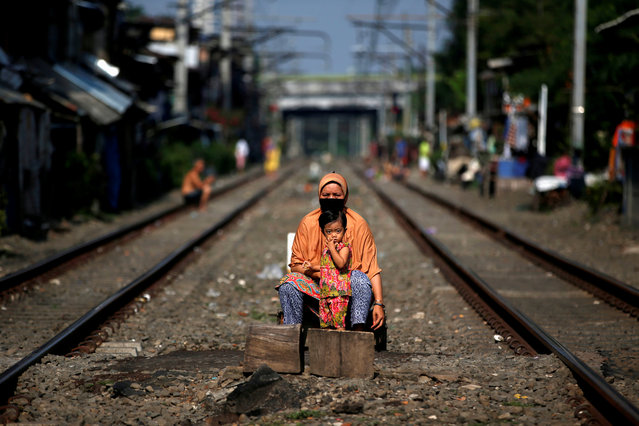
A woman wearing a face mask and a child sit between rail tracks, during the imposition of large-scale social restrictions by the government to prevent the spread of the coronavirus disease (COVID-19) in Jakarta, Indonesia, April 12, 2020. (Photo by Willy Kurniawan/Reuters)
28 Apr 2020 00:05:00,post received
0 comments

